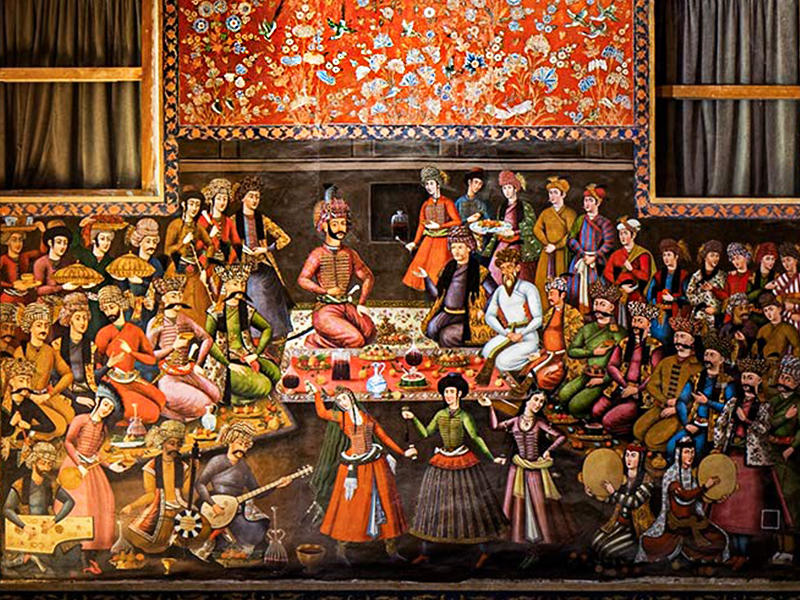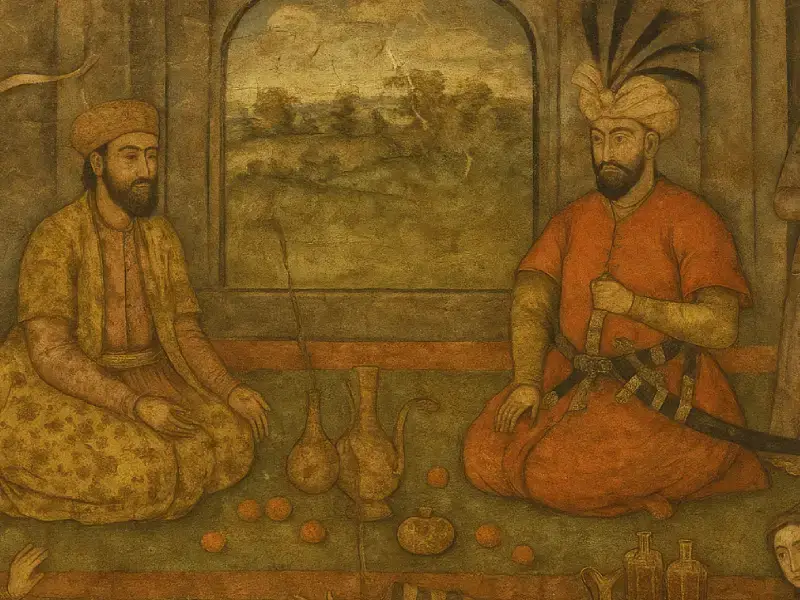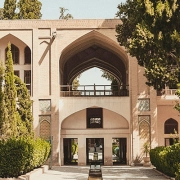Safavid Empire (History, Religion, Map, Founder)
Iran, with a fascinating history, has been home to many empires and dynasties in the past. These empires not only shaped Iran’s political and geographical map but also contributed to the culture and art of this nation. The Safavid Empire, being one of the most fascinating empires of Iran, was one of the amazing eras of this country, which is interesting to read about. In this article, we will explore the Safavid dynasty history and Safavid dynasty timeline to learn more about a part of the identity of the Iranian people.
Safavid Empire History
The Safavid dynasty was among the most important dynasties that ruled in Iran. By succession, the Safavid dynasty map was established from 1501 to 1736. Within these years, a long-lasting tradition, culture, and religion were formed as the identity of the Iranian people.
Some of the defining characteristics of the Safavid dynasty timeline are remembered due to the timeless cultural and religious following that was established and could not be rooted out. Of the things that the Safavid dynasty is particularly famous for is the imposition of Twelver Shia Islam as the religion of the State of Iran.
Ismail I, one of the Safavid dynasty leaders, declared the Shia religion as the national religion of the country. The Safavid dynasty founders had a lot of interest in the cultural identity of Iranians and patronized Persian art, literature, and poetry.
Safavid Empire Map
The Safavid dynasty map was expanded significantly during the reign of Shah Abbas the Great. Core regions in Iran and Azerbaijan were a part of the Safavid dynasty map, and later on, the map included parts of Today’s Iraq and the Caucasus.

Military reforms were also implemented to defeat the Uzbeks and Ottomans, resulting a control over cities such as Baghdad and Tabriz.
There were also campaigns in the Caucasus, which had secured territories like Georgia and Armenia. Safavid dynasty maps were stretched from the Caucasus to the Persian Gulf and from present-day Iraq and Turkey to Afghanistan in the Safavid dynasty timeline. However, after Abbas’ tenure, internal disputes and external assaults caused the empire to crumble.
The Safavid Empire dissolved in 1722 when the Afghan Hotaki dynasty captured Isfahan. Nonetheless, the Safavids had a long-lasting impact on the Iranian map.
Safavid Empire Religion
The Safavid dynasty’s religion was Twelver Shia Islam, which was promoted by the founder of the empire as the official religion and identity of Iran. The Safavid dynasty founder belonged to a Sufi order called Safaviya and had strong beliefs in this religion.
Ismail l made the Shia Islam religion the religion of the whole Safavid Empire. Later on, the Safavid leaders contributed a lot of efforts to convert the variety of Iran’s population to their official religion. Many policies, scholars, and religious schools were built during this empire to promote and support Shia Islam ideas, which resulted in a large population of Shia Muslims. The general promotion of this religion had many impacts on Iranian identity and society.

Safavid Empire Founder
Shah Ismail I, known as King of the Kings, was the Safavid dynasty founder. He was born in 1487 in a small city called Ardabil, situated in the northwest of Iran. The Safavid dynasty founder was the descendant of the Sufi saint Sheikh Safi al-Din, who was the leader of the Safaviyya Sufi order.
Ismail l began his religious education at a young age and gained significant followers with tribesmen who were loyal to him, resulting in to form of a powerful military force. Ismail l capitalized on the political and religious discontent prevalent in Persia at the time with a confederation called White Sheep Turkmens. In the year 1501, Ismail l declared himself as the king of Iran and built the Safavid dynasty. One of his aims was to unite the various Persian regions under his rule.
Safavid Empire Leaders
Shah Ismail l
The founder of the Safavid dynasty and Iran’s first Shah. He made Shia Islam the state religion and enlarged the Safavid Empire’s borders.
Shah Tahmasp I
He is the son of Shah Ismail I, who ascended to the throne as the second Shah of Iran, following in his father’s footsteps. He diligently carried forward his father’s vision of promoting Shia. Despite facing numerous obstacles, such as clashes with the Ottoman Empire and internal uprisings, Tahmasp I skillfully upheld the stability of the empire.
Shah Abbas the Great
The most influential ruler of Iran and the Safavid dynasty empire was Shah Abbas the Great. Strengthening the central government, promoting money flow in the country, and modernizing the military, Shah Abbas the Great resulted in various changes in Iran during that time. He also made Isfahan the capital of Iran. His reign is known as the golden age of Iran and the Safavid dynasty timeline.

Shah Safi
Succeeding in his father’s vision, Shah Safi continued the power and greatness of the Safavid Empire. However, he faced several challenges at the end of his career.
Shah Abbas II
He was the grandson of Shah Abbas l and faced several problems, including internal and external threats. Many regional losses happened during the rulership of Shah Abbas ll.
Shah Suleiman I
Facing numerous challenges after Shah Abbas ll, including conflicts with the Ottoman Empire, he was one of the leaders who defended their legacy while struggling in conflicts.
Shah Sultan Husayn
The last Safavid leader who was marked by political instability and territorial decline. The Afghan invasion in 1722 led to the collapse of the Safavid Empire during the reign of Shah Sultan Husayn.
Safavid Empire Timeline
In summary, the Safavid dynasty timeline begins with greatness and power and ends like other famous empires, by descending over time. In the Safavid dynasty timeline, Shah Ismail l forms the Safavid dynasty and declares himself as the King of Iran in the year 1501 and controls the country until 1524. After that, Shah Tahmasp l expands the country and promotes the Shia religion.
In 1588, Iran saw great achievements and cultural successes under the command of Shah Abbas the Great. In 1629, Shah Safi took over the kingdom. After that, Shah Abbas ll, in the years 1642 to 1666, faced several territorial losses.
Shah Suleiman l continues the empire from 1666 to 1694 and after that, Shah Sultan Husayn takes the wheel. In the year 1722, Afghans invaded and captured the Shah Sultan Husayn, and the Last Safavid ruler was the Shah Tahmasp ll.
Safavid Empire Military
The Safavid military was a crucial pillar of the empire’s power, especially during its formative years under Shah Ismail I. The empire relied heavily on the Qizilbash, a group of tribal warriors loyal to the Safavid dynasty, who played a key role in establishing and defending the state.

While their fierce loyalty and military prowess were vital in early conquests, their tribal nature sometimes led to internal power struggles, prompting later rulers to seek alternative military structures.
Recognizing the need for a more centralized and reliable force, Shah Abbas I reformed the military by creating a standing army composed of ghulams, slave soldiers of Christian origin, mainly from the Caucasus—who were trained and paid directly by the state.
This new military force was better disciplined and loyal to the Shah himself, reducing the influence of the Qizilbash. With advanced weaponry, including firearms and artillery, and tactical innovations influenced by both European and Ottoman methods, the Safavid army became one of the most formidable in the region during its peak.
Safavid Empire Location
The Safavid dynasty was primarily based in present-day Iran. Safavid dynasty locations and its capitals are the three most important cities of Iran. Tabriz was the earliest capital located in northwestern Iran. The city of Tabriz served as the center of power during Shah Ismail I’s reign.
In the follow-up, Qazvin, situated in the west of Tehran, became the capital of the Safavid dynasty to be closer to the empire’s heartland. Finally, Isfahan, situated in the central part of Iran, became the most renowned and influential capital of the dynasty. Shah Abbas the Great moved the capital from Qazvin to Isfahan in 1598.
Safavid Empire Architecture
The Safavids sure left behind some fancy buildings, especially when Shah Abbas the Great was ruling back in the 1500s and 1600s. Safavid dynasty architecture showcases the construction of great projects that mixed Persian, Islamic, and Central Asian styles. You can always recognize Safavid dynasty architecture by the complex geometric patterns, calligraphy, and colorful tilework.

One perfect example is Naqsh-e Jahan Square in Isfahan, the capital of the Safavid Empire, which saw great influences by architects and artists from around the world. Surrounding the square are the Imam Mosque (also called the Shah Mosque), the Sheikh Lotfollah Mosque with its towering minarets and domes, and the Ali Qapu Palace are some of the lovely examples of Safavid dynasty architecture. They showcase the trademark Safavid look with all the lavish decorations and innovative designs they came up with.
What Is the Safavid Empire Known for?
The Safavid Dynasty is known for its significant achievements that shaped the cultural identity of the Iranian people. One of the crucial roles of the Safavid dynasty was the establishment of Shia Islam in the country as the official religion of the Iranian people. Moreover, Shah Abbas the Great shaped the cultural significance of the country by making Isfahan the capital city of Iran and building a lot of buildings, gardens, and mosques for the people.
Isfahan became a center of art, inviting poets, scientists, and famous architects from all around the world. The Safavids fostered the development of Persian literature, miniature painting, calligraphy, and the arts. Additionally, The Safavids asserted their influence over a large part of the region, threatening the Ottoman Empire and other powers in the region. They extended their borders through wars and diplomatic initiatives that made Iran a major regional power.
Safavid Empire Trade
The Safavid Empire, which ruled Persia from the early 16th to the 18th century, was strategically located along the Silk Road, allowing it to thrive as a hub for international trade. The empire facilitated the exchange of goods between the East and West, including silk, carpets, spices, and ceramics.
Persian carpets, in particular, became world-renowned and were highly sought after in European markets. Trade was not just a source of wealth but also a medium through which the Safavids displayed their artistic and cultural sophistication to the rest of the world.

In addition to luxury goods, the Safavid Empire also exported agricultural products and imported goods such as textiles, precious metals, and manufactured items from Europe and India. The empire established trade relations with powerful entities such as the Ottoman Empire, the Mughal Empire, and European powers like Portugal and England.
Trade was closely monitored by the state, and the Safavids encouraged merchant activity by maintaining caravanserais and securing trade routes. This robust commercial network significantly contributed to the empire’s economic strength and global influence.
Who Defeated the Safavid Empire?
The Safavid dynasty was a powerful empire in Iran. Nevertheless, this empire also faced many challenges in the early 18th century because of the internal conflicts in the region and political disputes. Later on, the Afghan Hotaki dynasty gained power in eastern Iran and invaded Iran in 1722, when the empire was at its weakest state.
The Afghan forces defeated the Safavid army and deposed Shah Sultan Husayn of the Safavid Empire, who was the last Safavid ruler. In the year 1729, the Hotaki dynasty was eventually overthrown by Nader Shah Afshar, who was also an Iranian military commander known for his ability to fight and loyal followers.
Nader Shah led a successful rebellion against Afghan rulers and took over the control of Iran. Then, he established the short-lived Afsharid dynasty. This defeat was a watershed moment in Iranian history, as Nader Shah built a formidable empire and played an important role in influencing the region’s geopolitics in the 18th century.
Safavid Dynasty Empire
The Safavid dynasty empire had a remarkable impact on Iran. The solidifying of people with Shia Islam as the official religion was one of the unique things that this empire did, which continued to shape Iranian identity to this day.

The Safavids also fostered a period of cultural and artistic flourishing, especially in the fields of poetry, architecture, and carpet weaving in central Iran, creating a good space for the people and artists. Moreover, The architectural masterpieces of that era, such as the Imam Reza shrine in Mashhad, remain an important pilgrimage site for Shia Muslims and a legacy of the Safavid empire.
The Safavids also made policies that promoted trade and commerce in the region, which led to the economic growth of the nation. They established important trade routes and improved infrastructures. The Safavid Dynasty Empire became a major center for trade in that period, attracting millions of merchants and fostering cultural exchanges.
In addition, The Safavid leaders also centralized power in Iran and established a strong military. They also created a system of governance that revolved around the Shah as the supreme ruler, which continued to shape Iran’s political structure in subsequent centuries, even after the fall of the dynasty.
How Can Know about Safavid Dynasty Empire Today?
If you want to know about the Safavid Dynasty Empire in today’s world, you can travel to Isfahan and see museums, gardens, mosques, and other buildings that are the legacy of that period of Iran. Exploring this stuff will help you to have a better understanding of Iran’s identity, culture, and history, especially if you are a history lover.
Final Words
Iran’s history is rich and diverse, with several empires that ruled this country over time. The Safavid empire was a renowned dynasty for its greatness and cultural influences. Safavid leaders had a lot of impact on Iran’s cultural, artistic, and religious identity. Therefore, it is very important to study about Safavid dynasty timeline.
Knowing about the Safavid dynasty map shows the great power of their leaders and their political impacts on other countries. If you are a history buff or you’ve visited Iran recently, you can study about Safavid leaders in Isfahan.
Are you planning to travel to Iran and looking for an Iran resort? Consider Matinabad Eco-resort.














































